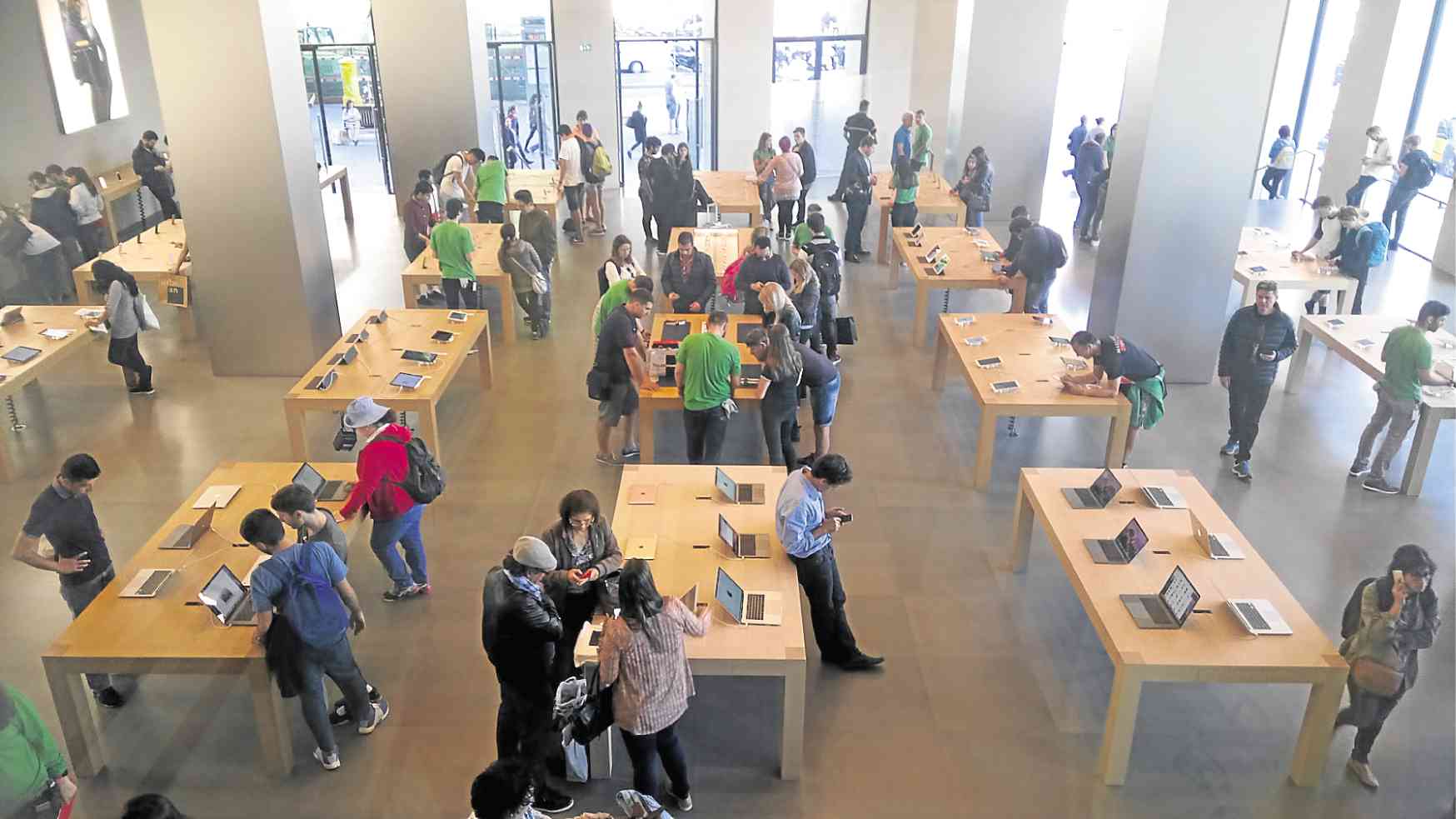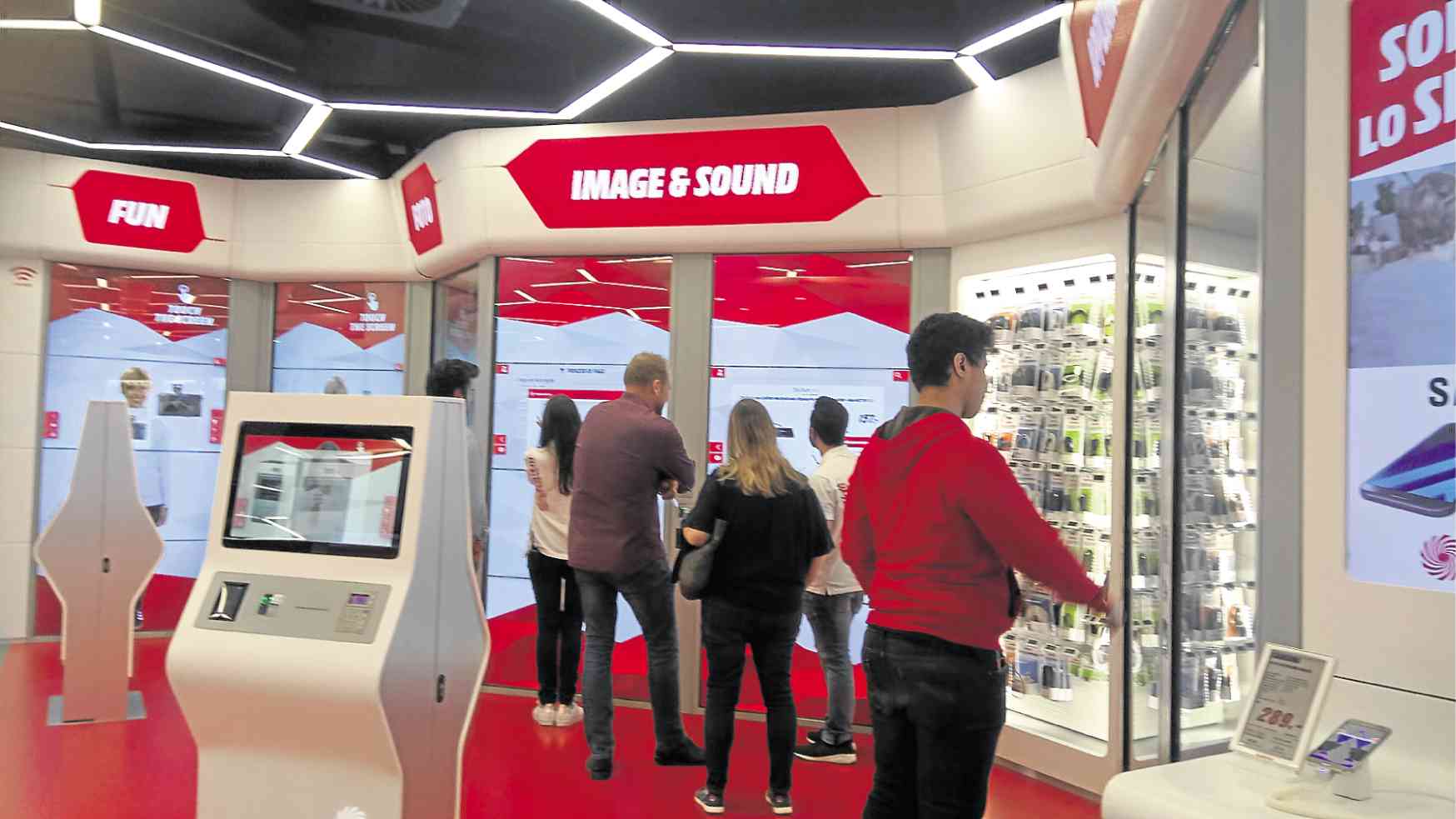Traditional shops vs online sites

People appreciate experiencing gadgets before purchase. Some retail outlets, meanwhile, mainly offer digital experiences.
Nowadays, shopping has become more effortless. With just a click of a mouse or a tap on a screen, people can buy within seconds. Online shopping has become popular due to its convenience, accessibility and speed. With the continued success of e-commerce, many now question the existence of traditional stores. Does online selling signify the death of actual shopping?
Options in selling
Clothes, appliances, gadgets—these are only some of the items that sell well online. Can you imagine, however, buying a car completely online? Or purchasing an expensive piece of jewelry without seeing it first?
According to the consumer psychologist Phillip Graves, people tend to feel safer buying products that are predictable and familiar online (Braff, 2014). When customers first try out a brand, many opt to visit retail stores. Shop employees help a lot in explaining items to them. This provides the assurance most people need before purchasing.
Luxury products also undergo deep scrutiny. The value of such items depends on their effects on the senses. In cases like these, buyers usually prefer experiencing the item first before confirming to buy.
In addition, older people are known to stick with the traditional mode of shopping. This is also the case when buyers are not comfortable with gadgets or prefer human interaction. Shopping, after all, is a social activity for many people.
Considering these ideas, one can see that online and traditional shopping actually go hand-in-hand. The two are mere channels through which retailers communicate with people. Markets, products and situations determine which method suits a business best.
Introducing the omnichannel
So which platform should your business adopt? Should you base your choice on market analysis or budget limits?
To save you the decision, why don’t you let clients choose? Marketing analysts now promote the idea of “omnichannel.” It is, simply put, a method of offering multiple buying options (Newman, 2014). By giving clients different ways of shopping—through the internet, in-store or even by phone—a company can offer a personalized experience.
A business with an omni-channel works like this: buyers can choose which media they wish to learn about a company’s products. They can also switch from one channel to another any time they wish.
For example, someone buying shoes might visit a website first to choose his or her desired style. The buyer then might want to visit a retail outlet to try out the product. Finally, he or she considers the promos available online or in-store to determine where to make the purchase.
It might seem complicated, but buyers always appreciate being informed. Offering multiple ways of getting the product means more support in establishing a brand.
Designing a brand experience
So considering both online and traditional selling, what makes a brand stick with users? Do beautiful shop interiors or eye-catching websites guarantee the success of the business?
Reality tells us no. There have been many businesses that went bust despite heavy investments in shop and website design. The truth of the matter is that a business has to consider client experience before, during and after shopping.
Whether using mobile apps, websites, retail outlets or a combination of these to sell, the business must be consistent. As the goal is to attract customers and keep them coming, the brand must be developed enough to tell a story.
Using any platform, a business should clearly show its core values and unique features. People should be able to easily understand what the brand is about, what it upholds, and what it promises to deliver. This will then become their basis in trying out a brand and sticking with it.
Thus, the success of attracting customers doesn’t really rely on which platform is used to sell. More often than not, it depends on the experience being offered by the brand.
(Sources: Braff, D. (2014, September 04). Buying Online versus in the Store. Retrieved August 29, 2017, from Chicago Tribune; Newman, D. (2014, July 22). The Omni-Channel Experience: Marketing Meets Ubiquity. Retrieved August 30, 2017, from Forbes.com)
The author is a Filipino architect who recently completed a Master’s Degree in Interior Design of Commercial Spaces from the Istituto Europeo Di Design (IED). She works for DSFN Architects, an architectural firm offering shop design among others.




